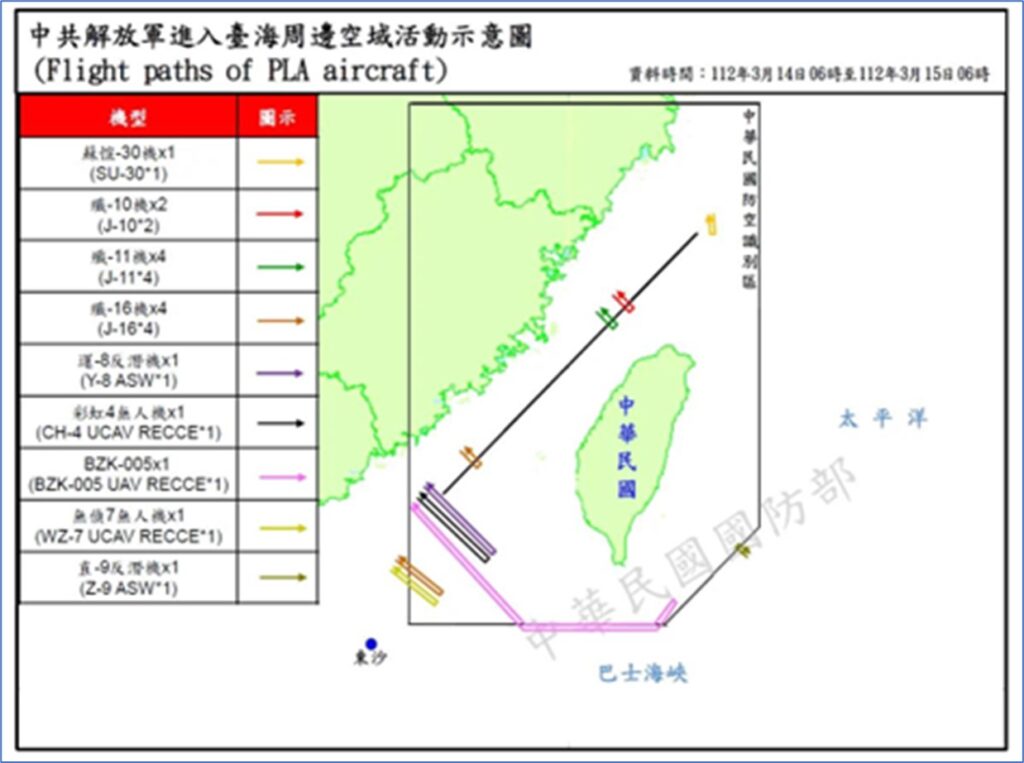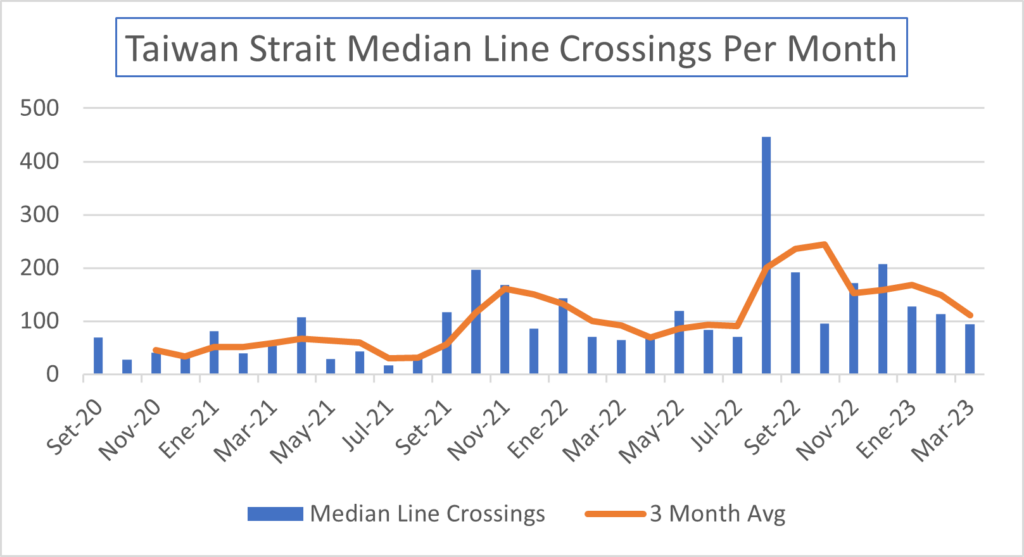
Business Continuity Concerns Amidst Taiwan-U.S. Meeting Part 1
By TorchStone Senior Analyst, Ben West
While military conflict is a worst-case scenario outcome of the current U.S.-China tensions over Taiwan, companies are more likely to face subtler forms of disruption.
An upcoming meeting between Taiwan’s President and the U.S. Speaker of the House likely won’t prove as disruptive as the previous meeting in August 2022, but companies should be prepared for Beijing’s response.
Economic retaliation, disinformation, or even sabotage campaigns aimed at Taiwan and companies operating there are likely in the near future.
This is the first part of a two-part analysis.
This installment examines the history of the conflict and outlines the current situation.
The second installment, Business Continuity Concerns Amidst Taiwan-U.S. Meeting Part 2, discusses the array of tools China can use against Taiwan, and ways companies and organizations can protect themselves against those tactics.
Taiwanese President Tsai Ing-wen is scheduled to stop over in Los Angeles for a 2-3 day visit April 5-7 on her way back to Taipei from a Latin America trip.
It is likely that during that stopover, she will meet with the U.S. Speaker of the House, Kevin McCarthy.
Taiwanese and U.S. officials reportedly agreed to hold the meeting in the United States in an effort to avoid the tumultuous Chinese response to former Speaker of the House Nancy Pelosi’s August 2022 visit to Taiwan.
However, a response from China to the toned-down meeting is still likely and has the potential to disrupt business operations in Taiwan over the coming weeks.
Following Pelosi’s visit in 2022, China conducted aggressive naval exercises that mimicked a naval blockade of the island, causing disruptions to regional shipping for several days.
Chinese forces also conducted missile test launches over Taiwanese airspace disrupting commercial airline traffic.
In addition to the immediate disruptions to commercial activity, the August 2022 visit triggered a new chapter of increased tensions over the Taiwan Strait.
China suspended bilateral talks with the United States and in the seven months since Pelosi’s visit, foreign companies in Taiwan and China have registered deep concern over the long-term risk of conflict over the status of Taiwan.
Increased Chinese military activity in the Taiwan Strait and accompanying business disruptions are possible in response to President Tsai’s upcoming meeting with House Speaker McCarthy in early April.
Companies doing business in Taiwan should be prepared for turbulence over the next couple of weeks.
There are no indications that China is preparing for a larger conflict, such as an invasion of Taiwan, at this point.
However, Beijing has many other tools it can use to undermine Taiwan’s political stability, economy, and security in response to high-level visits.
Brief History and Background
The China-Taiwan conflict dates to the Chinese communist revolution, when Mao Zedong’s communist forces defeated Chiang Kai-shek’s nationalist forces, which retreated to the island of Taiwan.
The retreat was the beginning of a decades-long territorial conflict, with Beijing claiming Taiwan as its own, while Taipei claimed that it was the rightful government of China.
The disagreement has been a perennial source of geopolitical tension in the Taiwan Strait and has undermined security on the otherwise safe and prosperous island of Taiwan.
Beijing attempted several invasions of Taiwan in the mid-1950s but was beaten back with U.S. military support.
Then, in the mid-1990s, China conducted a series of aggressive missile tests from 1995-1996 in an effort to intimidate Taiwan’s leadership from pursuing more formal independence.
While few countries formally acknowledge Taiwan as an independent country, most Western democracies have treated it as an independent polity through visits and trade deals, despite Chinese threats of retaliation. China’s most recent show of force in August 2022 fits this pattern of periodic escalation.
However, this time China’s military is much more formidable, and the escalation comes as the broader U.S.-Chinese rivalry threatens conflict.
The confluence of a heightened U.S.-China rivalry with Beijing’s decades-long goal of reunifying Taiwan presents a very real threat of war that risks destabilizing the entire Indo-Pacific region.
The Current State of Affairs
Beijing appears to have used Pelosi’s August 2022 visit as an excuse to increase its military activity in the Taiwan Strait.
While China has long flown and sailed patrols through the Taiwan Strait, activity has become much more aggressive since August 2022.
Due to the territorial dispute between China and Taiwan, there is no clear internationally recognized maritime border between the two, but Taiwan generally distinguishes its side of the Taiwan Strait from China’s by the Median Line—effectively a boundary splitting the Taiwan Strait in two.

Chinese aircraft crossing the Median Line increased from 972 in 2021 to 1737 in 2022.
The month of August 2022 alone accounted for 446 crossings—more than twice the level of activity of any month previously recorded.
Elevated activity has continued into 2023, with 98 median line crossings by Chinese aircraft through March 26.
The chart below illustrates how Chinese crossings of the Median Line have generally increased since 2020, but Aug 2022 was a clear aberration from the historical trend.
Median Line crossings by Chinese aircraft and maritime vessels force Taiwan to maintain a constant state of vigilance.
Taiwan’s air force scrambles jets to respond to Median Line violations, putting strain on Taiwan’s much smaller military force compared to China’s.
Taiwan’s fear is that China is regularizing violations of the Median Line to desensitize Taiwan and its allies to military operations closer and closer to Taiwan’s territory.
This makes it more difficult for Taiwan to distinguish between normal Chinese activity and a first strike preceding an invasion.

One of the most likely outcomes of the meeting between President Tsai and Speaker McCarthy in April is an increase in Chinese military activity along the Median Line of the Taiwan Strait.
China has conducted military exercises in the Taiwan Strait in response to Taiwanese assertions of autonomy—such as meetings with foreign powers.
What remains to be seen is whether China chooses to use the meeting as an opportunity to increase the level of hostility of the activity by, for example, encroaching further into Taiwan’s waters and airspace.
In March 2023, Taiwan Defense Minister Chiu Kuo-cheng warned the country to be on alert this year for the Chinese military making a “sudden entry into Taiwanese territorial space” to continue Beijing’s strategy of gradual encroachment.
Taiwan defines its territorial space as areas within 12 nautical miles from its coast.
For reference, the Median Line is 97 nautical miles from Taiwan’s coast.
Taiwan has not reported any incident of Chinese forces entering its contiguous zone (24 nautical miles from its coast) during current hostilities, so a breach of Taiwan’s territorial space would be a significant provocation on China’s part.
It’s possible that China could register its opposition to President Tsai’s meeting by encroaching into Taiwan’s contiguous zone or even its territorial space.
Such an encroachment would likely disrupt shipping traffic and commercial aviation in Taiwan as well as generate fears of a Chinese attack that could leave to evacuations or shelter-in-place orders.
However, both Taiwanese and U.S. officials have repeatedly discounted the likelihood of a Chinese military invasion in the near term.
In February, the director of the CIA, a senior U.S. Air Force official, the U.S. assistant secretary of defense for Indo-Pacific security affairs, and others downplayed the likelihood of direct Chinese military interference in Taiwan following frenetic media warnings of an invasion.
Further indicating the unlikelihood of an imminent conflict, the Center for Strategic and International Studies published the results of a war games scenario in January that found if China did try to invade Taiwan, the U.S. and its Pacific partners would be able to help Taiwan deny Beijing a victory, albeit at a great cost of human life and material.
The second part will discuss the array of tools China can use against Taiwan, and ways companies and organizations can protect themselves against those tactics.
